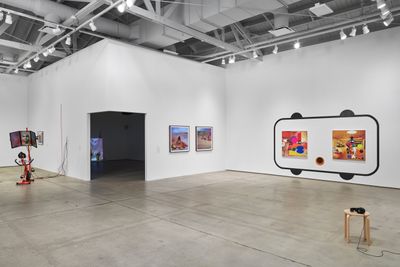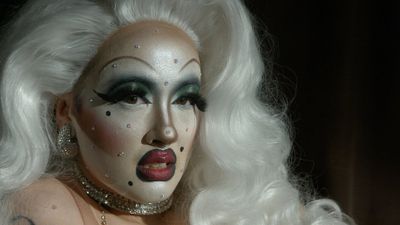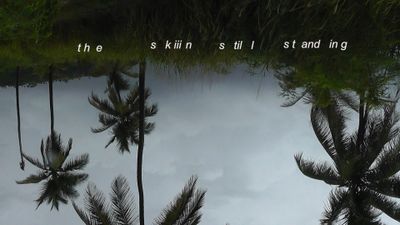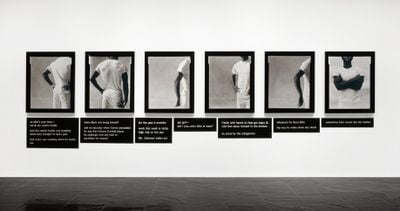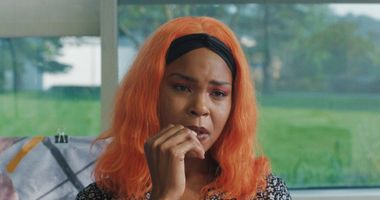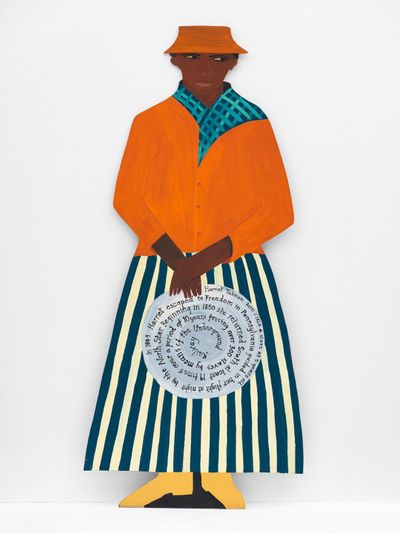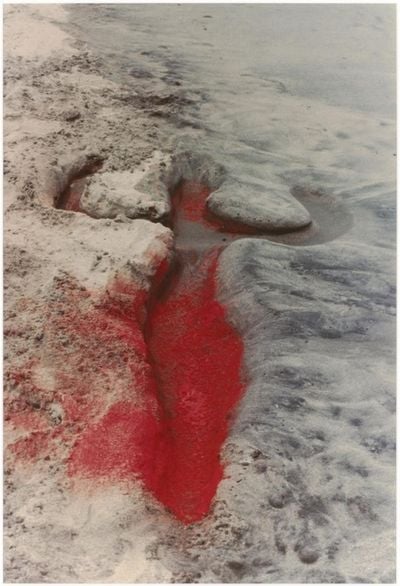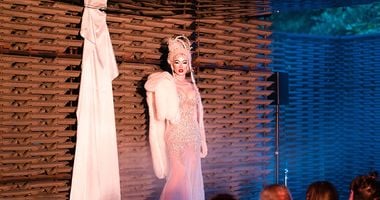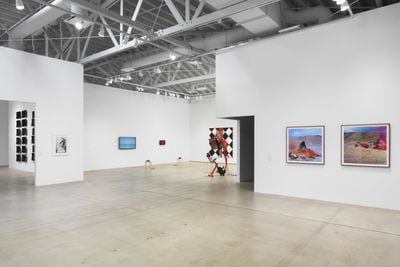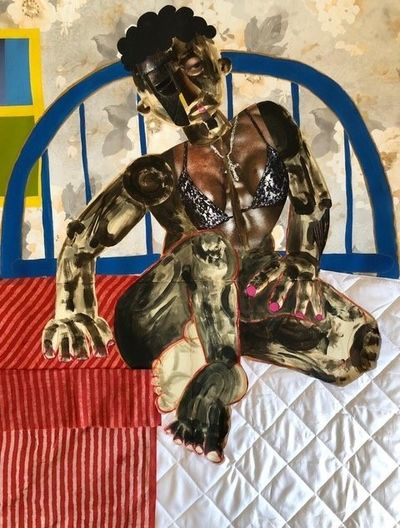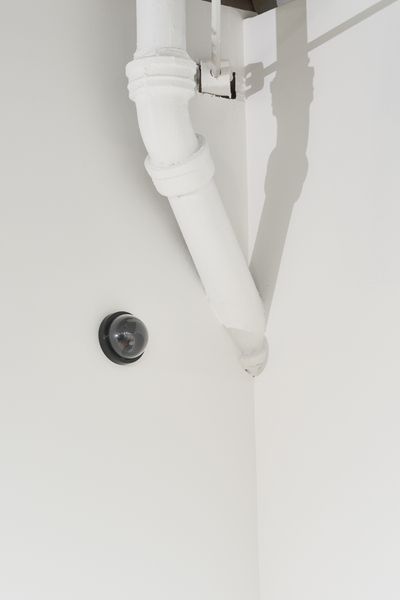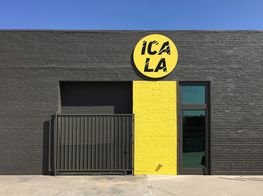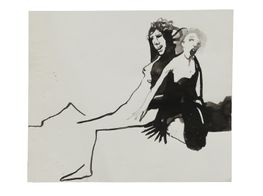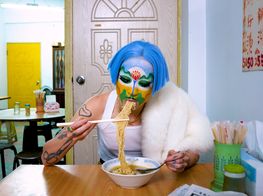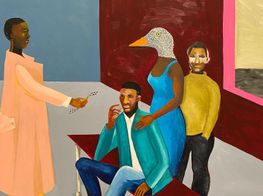At ICA Los Angeles, Being Comes With Conditions
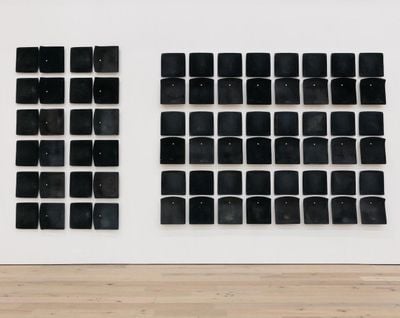
Jessica Vaughn, After Willis (rubbed, used, and moved) #012 (2022). 36 individual pairs of used machine-fabricated public-transit train seats (Chicago Transit Authority 1998–2011). 248.9 x 571.5 x 0.6 cm. Courtesy the artist.
The Condition of Being Addressable at Los Angeles' Institute of Contemporary Art (18 June–4 September 2022), is a group exhibition of 25 multi-generational, international artists, among them Hannah Black, Lubaina Himid, Mary Kelly, Lynn Hershman Leeson, and Sin Wai Kin, curated by independent curator Marcelle Joseph and Legacy Russell, executive director and chief curator of The Kitchen, New York.
Borrowing its title from Claudia Rankine's acclaimed book Citizen: An American Lyric (2014), wherein the author depicts and denatures the terms by which she is made Black, woman, American, and herself, the exhibition deals with the power and limits of discursive recognition when it comes to defining subjects within the ordering structures of the world.
More specifically, 'the condition of being addressable' is Rankine's paraphrase of American philosopher Judith Butler, best-known for their ideas on gender and the performative content of subjectivity, for whom 'being addressable' is a feature of being and a condition that entails vulnerability.
Along these lines, to be is to be vulnerable, but as we address people using language and gazes, this vulnerability is distributed to bodies unequally, according to categories like race and gender.
In the exhibition, these conceptual underpinnings come through most clearly when the art directly implicates its observers. As with Rankine's Citizen: An American Lyric, which is written in the second person with every 'you' a contention between the reader's identifications and the author's, many works here engage the explicit language and positioning of address.
A slew of videos achieve this quite viscerally. Among them is Sondra Perry's installation Graft and Ash for a Three Monitor Workstation (2016): an exercise bike with a seat surrounded by three screens, through which Perry's glitchy avatar tells viewers how real-world physical classifications of her body informed its digital representation. 'How does it feel to be inside of us?' she asks.
In Miatta Kawinzi's video, sweat/tears/sea (2017), the question 'How much can you hold?' appears over images of water, trees, and the artist herself, while abstracted vocalisations and brief musical gestures fade in and out.
E. Jane's Just a Girl (as MHYSA) (2016), projected over draped fabric and a flower arrangement, shows the artist staring at viewers as she distends the 'you' in Gwen Stefani's girl-power anthem, while Imran Perretta's single-channel video, brother to brother (2017), poses viewers as complicit witnesses to the panoptical policing of Brown men, showing the artist naked and bound with a bag over his head.
Surrounding these videos' forthright interrogations are paintings, sculptures, and photographs that further involve visitors as addresser and addressee, playing with who 'you' and 'I' become amid gender role expectations, racialised bodies, and within the museum space itself.
Lorna Simpson's classic Gestures and Reenactments (1985) features a series of six silver gelatin prints—portraits of a body whose face is out of the frame. The subject's clothing, hairstyle, and skin colour correspond to cultural signs for 'male' and 'Black'. Seven engraved texts accompany the images, with phrases, like 'sometimes Sam stands like his mother', which describe the shifty contextuality of the subject's identity, depicted with folded arms and hands on hips.
In another portrait, Toyin Ojih Odutola's The Second Hour (2018), a Black figure rendered in charcoal, pastel, and pencil looks away from viewers, toward the space below a window, their face unseen. Running down the wall and onto the floor, is Diamond Stingily's Kaas (Punishment) (2019): a series of hair extensions attached not to any person but to their associations with Blackness and femininity.
Exhibiting all these artists of colour in a show named after Rankine's text necessarily calls out (or addresses) the essentially white space of the museum, while the mostly non-male roster is particularly attuned to an awareness that gender doesn't appear without race.
It's a bit of a predictable curiosity, then, that the way race functions as fundamental to familiar forms of address emerges, unstated, in the juxtaposition of works from two basically canonical series, Judy Chicago's 'Women and Smoke' (1968–1974) and Ana Mendieta's 'Silueta Works in Mexico' (1973–1977).
In Chicago's Immolation and Smoke Bodies (both 1972), white women with their skin painted, play with rainbow pyrotechnics in the California desert. The works intend to refer to non-Western traditions of matriarchy and goddess worship, as well as the historical practice of sati in India, whereby widows would be burned on their husband's funeral pyres.
The wall text states that Chicago's 'environmental works stand in stark contrast to artworks from the Land Art movement made by male artists ... that literally gouge into the earth, colonising it as creative "open space"'.
Rankine's text states plainly that the condition of being addressable is one in which racism can work to make somebody disappear.
With that description in mind, one must assume Mendieta's untitled work nearby from the 'Silueta' series—a photo documenting the aftermath of the artist gouging into the earth to impress her non-white body into it—differs from those ostensibly similar actions by male land artists just described.
The wall text for Mendieta's image, which shows a relief of her carved into the earth and strewn with red powder, reads: the piece explores 'a matrilineal connection to the land, engaging systemic histories of female erasure and gender violence'. It forms a part of Mendieta's practice that 'foregrounds an intersectional conception of identity, in which race, gender, age, and class operate simultaneously'.
So, while Chicago stages a confrontation with her institutionally embraced peers on the grounds of gender difference, Mendieta takes on that difference among all the others. While Chicago's art displays an embodied presence, empowered with and by the capacity to treat visual and cultural signifiers—the terms of address—as objects of appropriable malleability, Mendieta's art shows her body disappearing into the authentic otherness of absence, nature, and death.
The presentation of Chicago and Mendieta's works together, and with their descriptions, underscores the persistence with which race can shape structures of meaning and experience beyond feminist incursions on male-dominated territory.
To be addressed as a 'non-male' is not the same as being addressed as a man, and while the patriarchy can dispense its own evils, the power structures that underlie 'whiteness' can keep others plastic, fungible, and available in whatever way to the consequences of address that maintain and proliferate its power.
Rankine's text states plainly that the condition of being addressable is one in which racism can work to make somebody disappear, but it can also 'exploit all the ways that you are present'.
As these tensions play out between artworks and texts, white feminism and Black and Brown realities, Aria Dean's Dummy Cam (icon) (2019) is passively stuck to the gallery's upper corner. A fake surveillance camera, blank and unseeing, reminding visitors that they are being watched. The piece nods to a demand for opacity facing impossible situations.
Here, it is nothing less than the atrocious history that bears out in the present, where to be addressed is to have your vulnerability specified. To change this all-too-familiar dynamic, aesthetic interventions need to radically re-orient the binaries of gender and race—of 'you' and 'I'—to break their aporia and realise forms that are indifferent to existing readings and the institutions from which they propagate.
Language is such an institution; art and museums are, too. For now, we have an exhibition in which a white philosopher's words appear through a Black poet's text and entangle artists and viewers alike in the profound asymmetries and antagonisms of a shared condition. —[O]
1 Claudia Rankine, Citizen: An American Lyric, (Graywolf Press: Minneapolis, 2014), p. 57.


